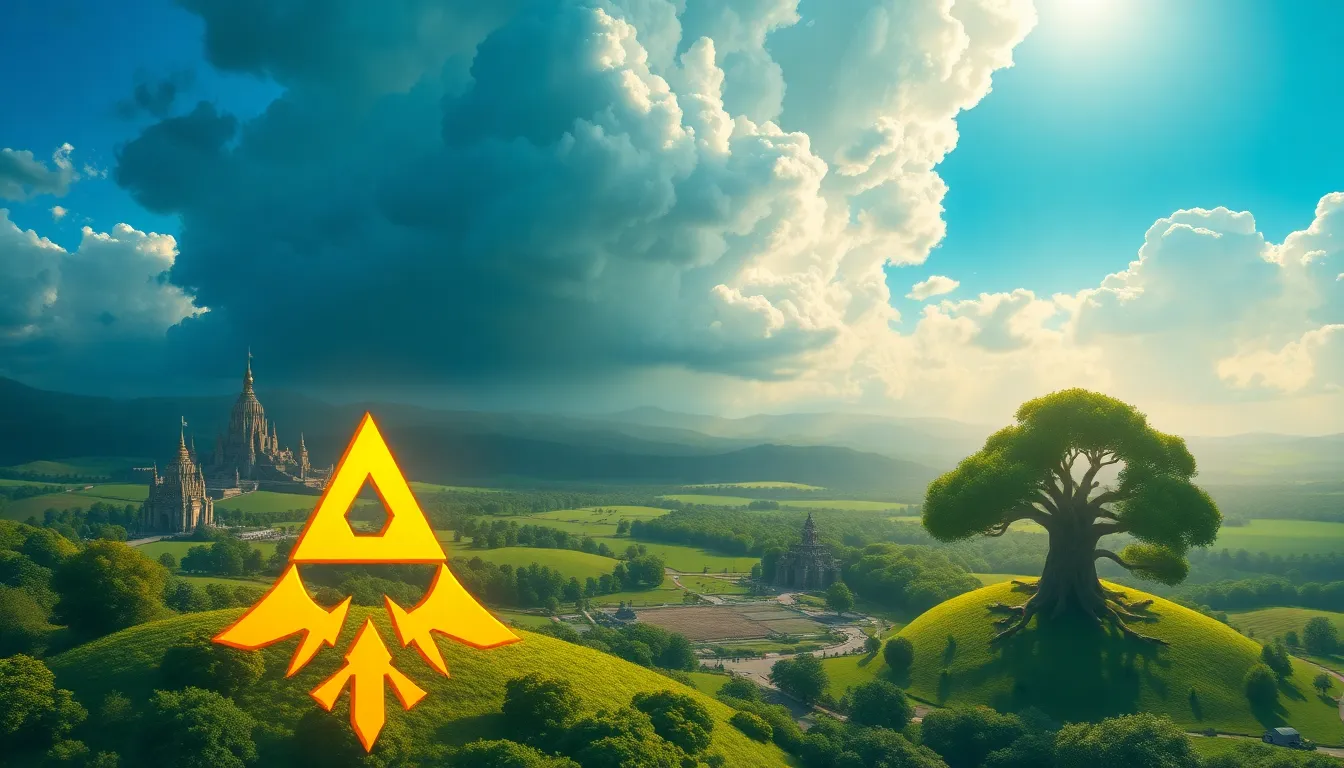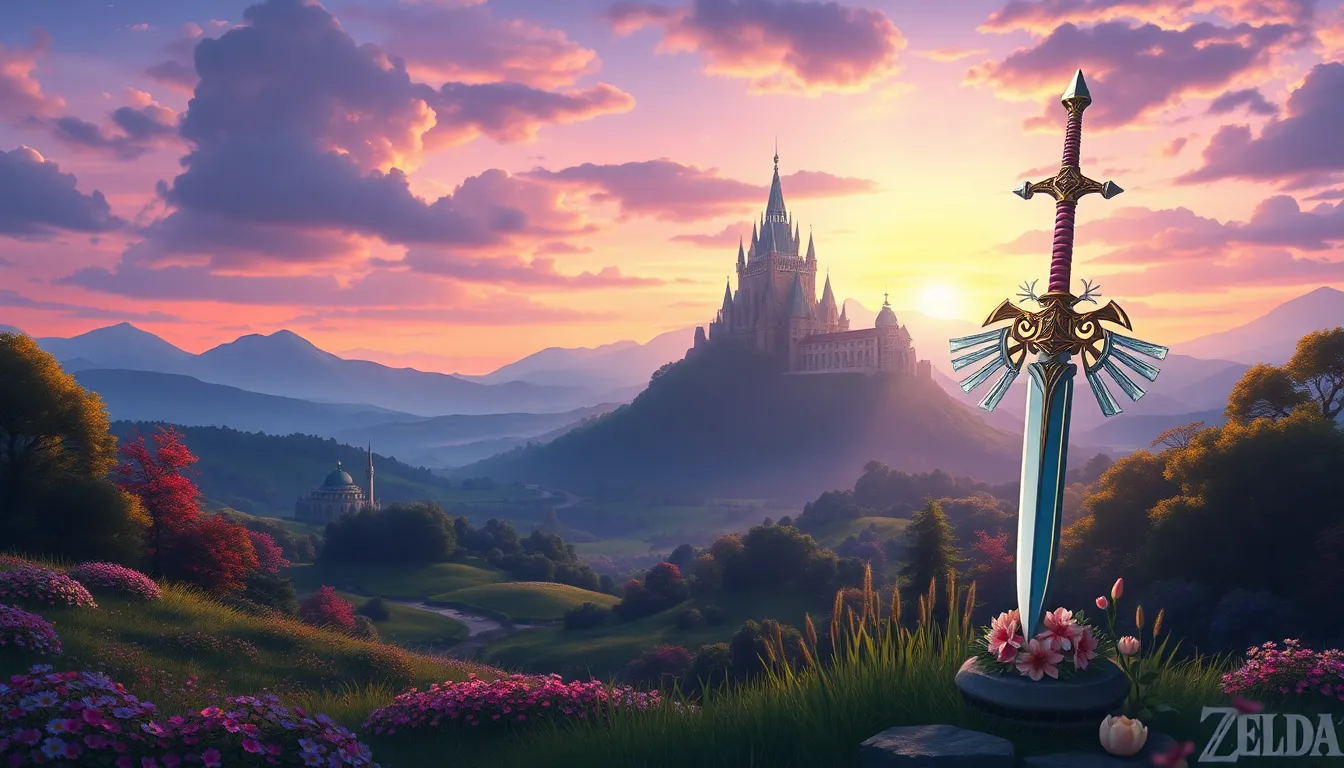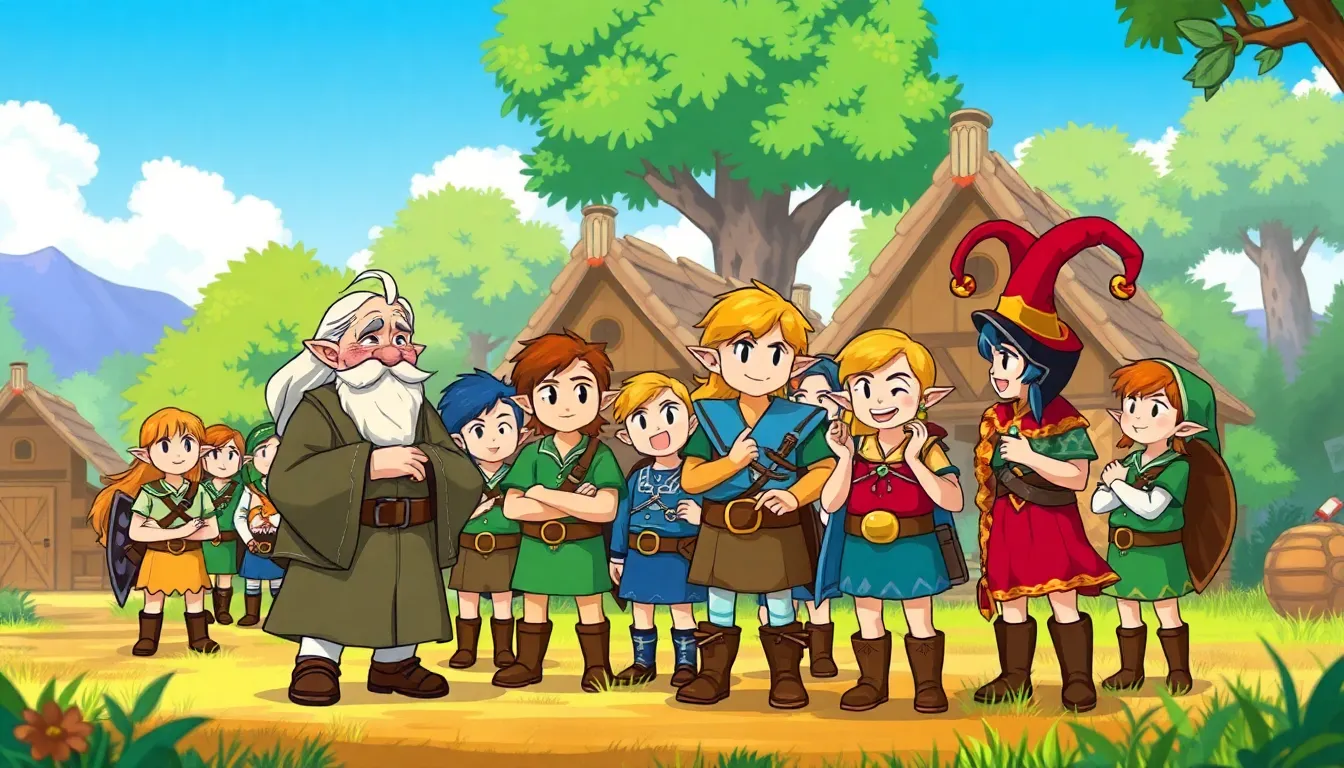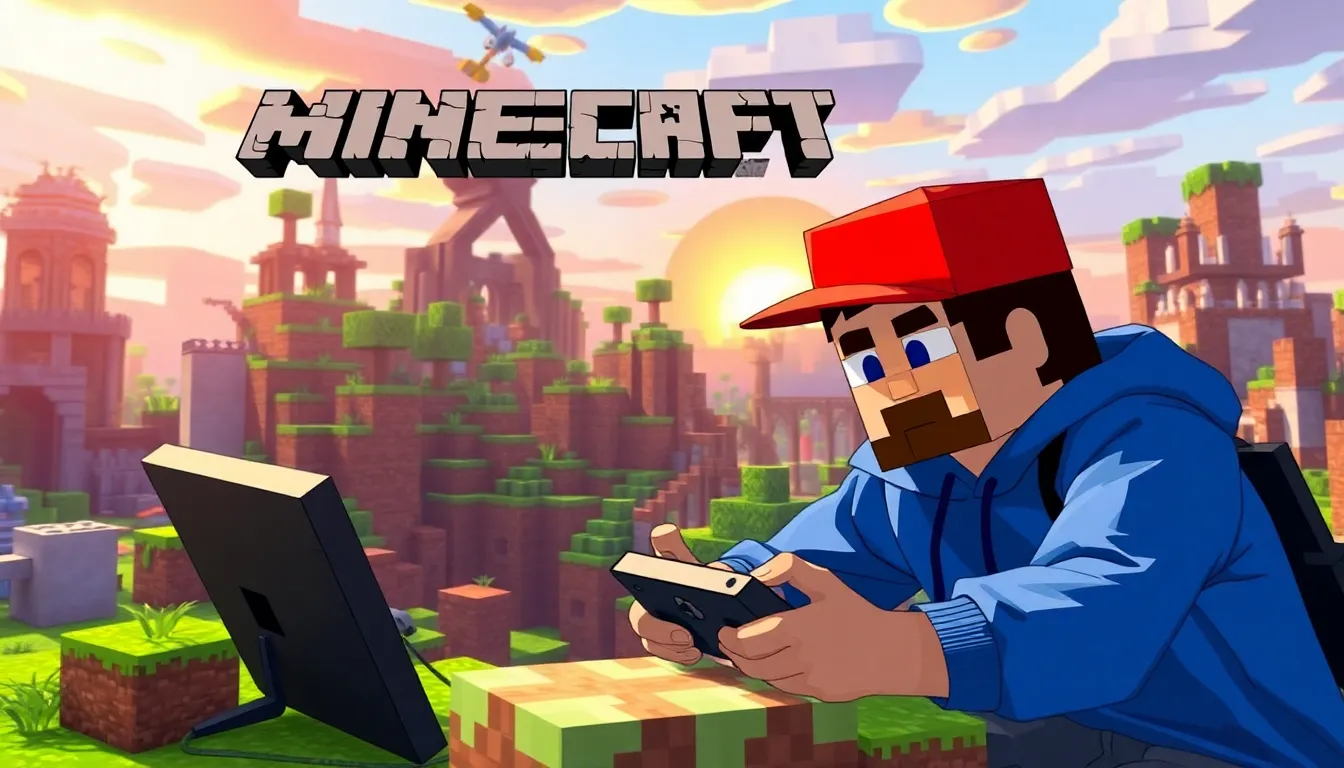The Legend of Zelda series has captivated gamers for decades, weaving a complex tapestry of adventure, heroism, and a sprinkle of fairy dust. But as Link traverses through dungeons and battles Ganon, one question looms large: where does it all fit in the timeline? It’s like trying to solve a Rubik’s Cube blindfolded while riding a unicycle.
Table of Contents
ToggleOverview of the Zelda Timeline
The Zelda timeline presents a complex narrative structure, dividing the series into distinct eras. Three primary branches emerge following the timeline’s split during “The Legend of Zelda: Ocarina of Time.” Significant events lead to the establishment of these branches, resulting in diverse stories for Link and Princess Zelda.
One branch follows the timeline where Link defeats Ganon. This path features titles such as “The Legend of Zelda: The Wind Waker” and “The Legend of Zelda: Breath of the Wild,” showcasing a peaceful Hyrule that flourishes after Ganon’s downfall. The focus here remains on exploration and adaptation, emphasizing themes of renewal and hope.
Another timeline diverges when Link is defeated. Ganon’s tyranny reigns in this narrative, which includes games like “The Legend of Zelda: A Link to the Past” and “The Legend of Zelda: Oracle of Seasons.” These stories showcase Link’s struggle against overwhelming odds while featuring dark elements that underscore the persistent threat of evil.
The third branch exists when Link and Zelda travel to a new timeline parallel to their original world. Titles such as “The Legend of Zelda: Majora’s Mask” and “The Legend of Zelda: Twilight Princess” offer unique experiences, engaging players with themes of time manipulation and twilight realms. This timeline highlights various challenges and enemies, expanding the Zelda universe’s rich lore.
Understanding the timeline requires a deep dive into each game’s narrative. Every game contributes layers to the overarching saga. With so many interconnected stories, fans relish piecing together Hyrule’s history, reinforcing the series’ appeal as a timeless classic.
Major Eras in the Zelda Timeline

The Legend of Zelda timeline divides into distinct eras, each contributing uniquely to the series’ rich narrative.
The Era of the Goddess
The Era of the Goddess marks the origins of Hyrule. During this period, the goddesses Din, Nayru, and Farore created the land, establishing its foundations. The Great Goddess Hylia plays a crucial role, guiding the people and protecting the Triforce. Early conflicts arise as forces of evil, such as Demise, challenge peace. Notable entries like “Skyward Sword” explore the mythology of this era, showcasing the genesis of the hero’s journey and the eternal battle against darkness. The introduction of key artifacts like the Master Sword emerges, symbolizing hope and courage.
The Era of the Hero
The Era of the Hero centers around Link’s adventures and challenges. It begins once the Master Sword emerges victorious against evil entities. Significant titles, including “Ocarina of Time,” depict Link’s journey to thwart Ganon’s ambitions. This era branches into distinct timelines following pivotal events, such as Link’s victories and defeats. Games like “A Link to the Past” illustrate the struggle between good and evil. Exploration and puzzle-solving define gameplay during this period, with each title solidifying Link’s legacy as the Hero of Time. The connection between Zelda and Link further deepens, shaping the narrative.
The Era of Decline
The Era of Decline reflects a world succumbing to chaos and misrule. Hyrule faces turmoil as Ganon’s tyranny prevails in this timeline. Titles like “The Legend of Zelda” and “A Link Between Worlds” showcase the struggles faced by the remaining heroes. Villainous forces thrive, presenting significant obstacles for players. The narrative pivots toward a more somber tone, revealing the consequences of prior triumphs and failures. Link’s resilience remains vital, even as Hyrule’s heroes confront despair. This era underscores themes of loss, perseverance, and the cyclical nature of good versus evil within the series.
Key Games and Their Placement
The Legend of Zelda timeline showcases a series of influential titles that define Hyrule’s history. Each game occupies a specific place, contributing to the overall narrative.
The Legend of Zelda Series
This series includes several notable titles, beginning with the original “The Legend of Zelda” released in 1986. It establishes the core elements, introducing Link’s quest to rescue Princess Zelda and defeat Ganon. “The Legend of Zelda: Ocarina of Time” defines a pivotal moment, splitting the timeline into three branches. Subsequent entries, like “The Legend of Zelda: A Link to the Past” and “The Legend of Zelda: The Wind Waker,” further develop these narratives. Each game explores themes of bravery and sacrifice, inviting players deeper into Hyrule’s lore. “The Legend of Zelda: Breath of the Wild” concludes this extensive narrative arc, showcasing a vast open world and remnants of past adventures.
Spin-Off Titles
Spin-off titles expand the Zelda universe by introducing unique gameplay and narratives. “Hyrule Warriors” merges action with franchise lore, offering a different experience while maintaining familiar characters. “The Legend of Zelda: Cadence of Hyrule” blends rhythm mechanics with exploration, creating a distinct musical journey. “The Legend of Zelda: Four Swords” emphasizes multiplayer experiences, showcasing Link’s adventures through cooperative gameplay. These spin-offs, while separate, enrich the overarching lore, connecting back to the main series in significant ways. Through these diverse entries, the series continues to captivate fans and introduce Hyrule to new audiences.
Fan Theories and Interpretations
Fan theories and interpretations of the Zelda timeline deepen the exploration of Hyrule’s lore. Players analyze connections between various titles and characters, often proposing alternate narratives.
Alternate Timelines
Alternate timelines emerge from the split occurring in “Ocarina of Time.” Fans frequently argue each branch features distinct interpretations of key events. The timeline where Link is victorious leads to peace, while the one where he’s defeated showcases Ganon’s tyranny. Unique branches include those in “Wind Waker” and “Majora’s Mask,” presenting diverging adventures. Evidence within gameplay often supports these alternate timelines, urging fans to debate potential consequences on Hyrule’s fate.
Canon vs. Non-Canon
Discussions about canon versus non-canon elements ignite passion among Zelda fans. Canon games such as “Ocarina of Time” provide a foundation for understanding the primary storyline, but non-canon titles like “Hyrule Warriors” introduce alternative narratives and characters. Many players enjoy these spin-offs, even if they don’t follow the main timeline. The ambiguity of what constitutes canon allows for greater interpretation and creativity within the fan community, fostering vibrant discussions and analyses surrounding Hyrule’s expansive lore.
The intricate timeline of The Legend of Zelda series continues to captivate fans and newcomers alike. Its complex narrative structure invites exploration and discussion while emphasizing the enduring themes of heroism and adventure. Each game contributes to a rich tapestry of lore that not only entertains but also sparks creativity and speculation among players.
As they piece together Hyrule’s history, fans find joy in the connections between titles and the characters that inhabit this beloved universe. The ongoing debates about canon and non-canon elements only enhance the series’ allure. Ultimately, The Legend of Zelda remains a timeless classic that inspires generations to embark on their own heroic quests.



